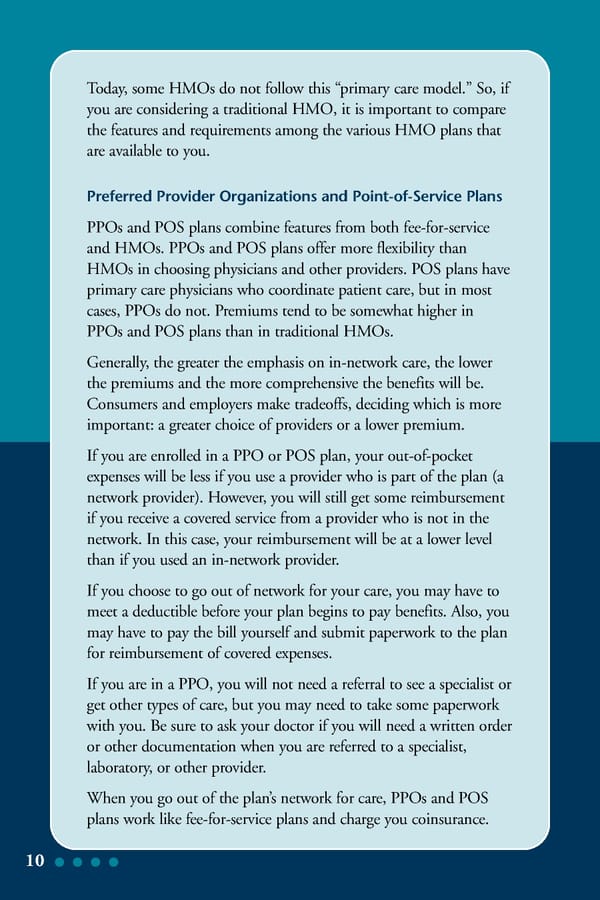Today, some HMOs do not follow this “primary care model.” So, if you are considering a traditional HMO, it is important to compare the features and requirements among the various HMO plans that are available to you. Preferred Provider Organizations and Point-of-Service Plans PPOs and POS plans combine features from both fee-for-service and HMOs. PPOs and POS plans offer more flexibility than HMOs in choosing physicians and other providers. POS plans have primary care physicians who coordinate patient care, but in most cases, PPOs do not. Premiums tend to be somewhat higher in PPOs and POS plans than in traditional HMOs. Generally, the greater the emphasis on in-network care, the lower the premiums and the more comprehensive the benefits will be. Consumers and employers make tradeoffs, deciding which is more important: a greater choice of providers or a lower premium. If you are enrolled in a PPO or POS plan, your out-of-pocket expenses will be less if you use a provider who is part of the plan (a network provider). However, you will still get some reimbursement if you receive a covered service from a provider who is not in the network. In this case, your reimbursement will be at a lower level than if you used an in-network provider. If you choose to go out of network for your care, you may have to meet a deductible before your plan begins to pay benefits. Also, you may have to pay the bill yourself and submit paperwork to the plan for reimbursement of covered expenses. If you are in a PPO, you will not need a referral to see a specialist or get other types of care, but you may need to take some paperwork with you. Be sure to ask your doctor if you will need a written order or other documentation when you are referred to a specialist, laboratory, or other provider. When you go out of the plan’s network for care, PPOs and POS plans work like fee-for-service plans and charge you coinsurance. 10
 Health Insurance Q&A Page 13 Page 15
Health Insurance Q&A Page 13 Page 15